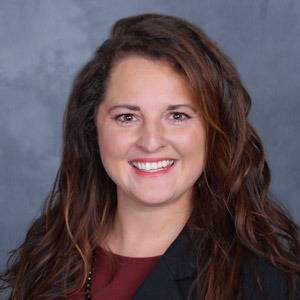- Solutions
- Solutions
- Home Health
- Hospice
- Life Plan Community
- Palliative Care
- Private Duty
- Senior Living
- Skilled Nursing
- Skilled Nursing
- Skilled Nursing Software
- Advanced Insights
- Customer relationship management
- Data and analytics
- Financial & operations management
- Marketing
- Nutrition management
- Referral management
- Regulatory compliance
- Retail management
- Resident engagement
- Revenue cycle management
- Skilled nursing interoperability
- Partners
- Blogs
- Resources
- About
- User Conference

How are your peers using data and analytics?
Recently, MatrixCare conducted a survey to find out how senior care facilities currently use data and analytics, and how they see their use changing in the future. We surveyed more than 700 organizations, including skilled nursing, life plan communities, senior living, and those providing care in multiple settings.
We asked about the tools they are using to gather and evaluate data, what areas of their business benefit most from analytics, and how they define the value of analytics.
Commonly used tools
It’s probably no surprise that a sizeable majority of respondents—82%—still use Microsoft Excel for analytics and reporting. Despite organizations wanting to eliminate spreadsheets and “shadow databases” created in Excel, old habits die hard, and Excel will probably be used for years to come. Other findings show that 62% have a dashboard that shows real-time data; 47% have a historical dashboard, and 31% have predictive analytics that use machine learning algorithms to see patterns in large data sets that would be difficult for the human eye to detect.
Important areas for analytics
Survey results show there has been a surge of interest over the last five years in using analytics for clinical topics like readmissions, falls, infections, wounds, and more. And while demand for revenue cycle (49%) and operational (62%) analytics remains high, there is growing demand for and use of clinical analytics.
How analytics are being used
An interesting split shows that leaders in long-term care facilities use analytics differently from those on the front lines of care. Leaders said identifying trends was the most important use for analytics (81%). Caregivers cited decision making (77%), care planning (62%), and allocating resources (56%) as their top uses. But the uses complement each other. For example, a trend showing resident falls over the past 12 months by facility and by nursing unit would allow leaders to find opportunities for improvement, then build a QAPI program to address those needs. That’s something you can’t do with granular data.
The value of analytics to the industry and to individual organizations
There is broad agreement that analytics will be important or very important for long-term care providers over the next three to five years. Only 4% of respondents disagreed. The same statistics hold true for the value of analytics to individual provider organizations.
So the message is clear: nearly all respondents recognize the emerging and future value of analytics. Even if organizations aren’t seeing the full value today, they understand that analytics will be an important part of their workflow in the near future.
A new tool: Predictive analytics
Many respondents see a range of uses for predictive analytics. In fact, 80% see this tool as a way to improve quality measures. Potential uses cover a range of clinical applications, with the end goal of keeping or boosting a facility’s Star rating. In turn, Star ratings help with referrals and staying within narrowing networks in your market.
Respondents also believe predictive analytics will be helpful in managing staff—that is, assigning existing staff resources to the areas that need them most. Predictive analytics are also considered valuable in reducing falls and readmissions, which connect with both quality measures and staffing challenges. The overall trend is that providers see a growing number of clinical uses for predictive analytics, outpacing more traditional RCM or financial analytics.
Most respondents (96%) said they see predictive analytics playing an important role in their organizations and providing value in some way; two-thirds believe predictive analytics will drive many important changes, from forecasting changes in condition to predicting falls or other adverse events, to staffing and financial management.
See what MatrixCare can do for you
Rob Price
Rob Price joined MatrixCare in 2016 and has been working in the healthcare technology market since 1999. His experience covers the continuum of the healthcare delivery system starting with physician practice management (EHR and RCM), hospital patient accounting (RCM), and long-term care (EHR and RCM). His focus has always been on building reporting and analytics systems that empower people and organizations to be information driven.
Related Posts


See MatrixCare in action
Start by having a call with one of our experts to see our platform in action.
MatrixCare offers industry-leading software solutions. Thousands of facility-based and home-based care organizations trust us to help them improve efficiency and provide exceptional care.
© 2025 MatrixCare is a registered trademark of MatrixCare. All rights reserved.






